Fresh Beetroots are surprisingly soft with a delicious earthy flavor. The best part is that they are really easy to grow from seeds. From dark red globes to candy striped and golden yellow roots, there are many varieties to try that will instantly liven up your dishes. Leaves also do not forget to eat, which can be used in salads when they are young or wilted and used in place of Spinach when they are mature.
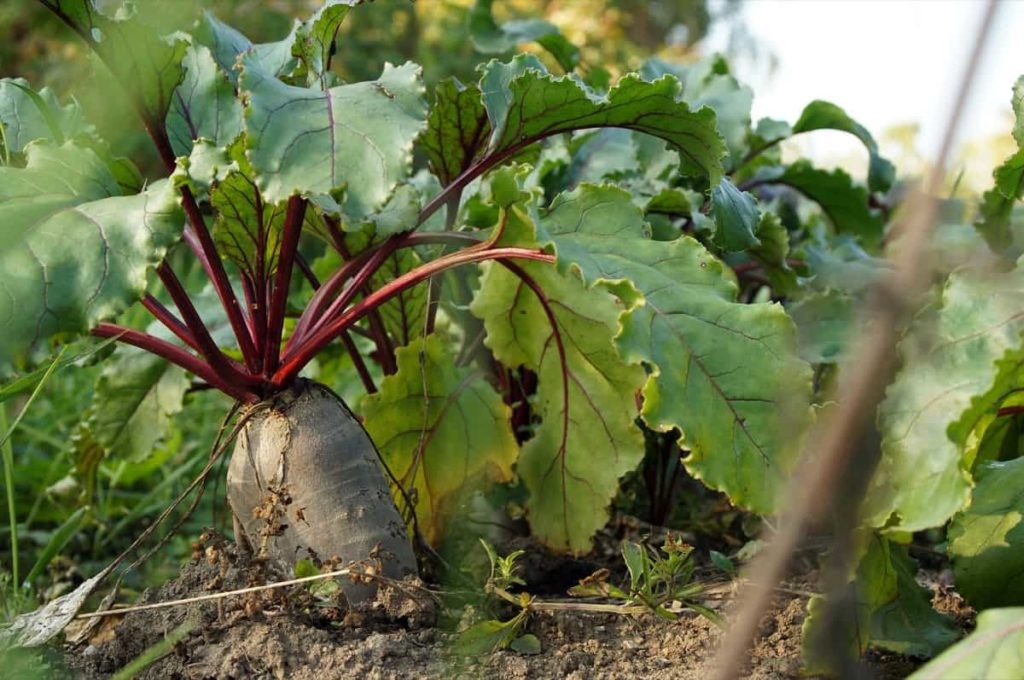
As a root vegetable, Beetroot comes in various shapes, sizes, and colors with food leaves that taste great in salads. It’s also easy to grow at most times of the year, and they don’t need much space.
How to grow Beetroot from seed to harvest
How long does it take for Beetroot to grow from seed to harvest?
- One should be ready for harvesting 7 to 8 weeks after planting Beetroot. Young, tender tops often have mild quality, but you can use greens until they become larger and strong flavored. You can start harvesting Beetroot greens once the plants are about 3 to 4 inches tall.
- Beetroot is a cold-season vegetable crop, so you may get an early crop in the spring and a crop planted in summer or autumn. However, most varieties of Beetroot are ready for harvesting about two months after planting.
How many Beetroot do you get from one seed?
Only one Beetroot comes from each Beet plant. But a Beet seed can grow many Beetroot plants to add to the complexity. Beet ‘seeds’ usually seed clusters with 1 to 6 viable plants. A Beet seed (a capsule of multiple seeds) can sprout several Beetroot plants while growing.
How much do Beets yield?
- Production can vary from variety to variety. However, you’ll likely harvest about 7 kg of Beetroot per 10 feet 3 meters of the row.
- Farmers can easily get a basic yield of 14 to 19 kg per acre in the shortest period, i.e., 2 to 3 months. However, farm management, maintenance, and correct methods lead to higher yields.
What is the best month to plant Beetroot?
- You can plant Beetroot up to about six weeks before your first frost.
- You can grow Beetroots almost all year round, but do not sow seeds during the mid-winter because the roots will mature in the hottest times of summer and quickly go to seed. Beet plants like fertile, well-drained soil and consistent water.
- Sow small batches at fifteen-day intervals from March or April to July to produce soft and delicious roots one after the other. Choose bolt-resistant varieties for early swings under cloches or fleece in late February or early March.
In case you missed it: Homemade Fertilizers for Root Vegetables: Potatoes, Carrots, Beetroot, Onions, Radishes, Turnip, Ginger, and Garlic
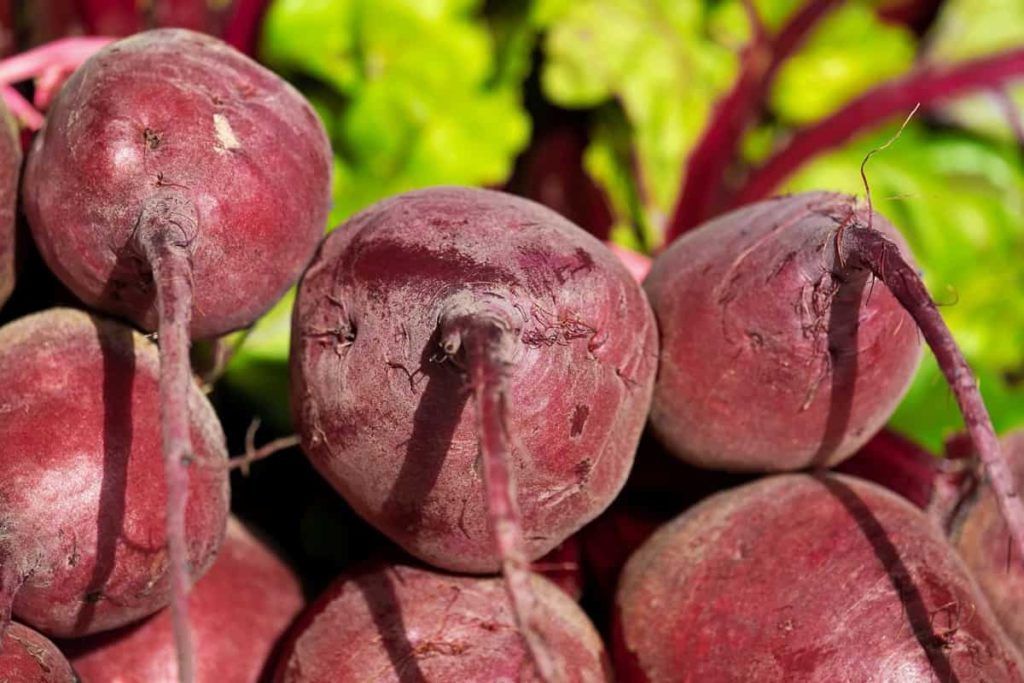
Does Beetroot need full sun?
- Beetroot prefers a position in full sunshine. Improve soil by adding well-rotted compost, and avoid manures and other fresh soil improvers as they can lead to bolting or not developing the roots properly.
- Beetroot produces small but delicious and soft roots in the shade. In your area, get less than four hours of sun every day; focus on greenery, not on your roots. This salad green doesn’t just tolerate shade but thrives in it.
- They should ideally get at least 6 hours of direct sunlight daily. Beets prefer well-prepared, fertile soil but will tolerate below-average soil fertility.
- Beetroot requires at least four hours of sunlight a day and grows best based on large plants like Capsicum and Tomatoes or in a place where you have just grown leafy vegetables.
How do I grow bigger Beetroot?
- It is generally believed that all Beets that grow much larger will be wooden, but this is based more on age than size. You may have small Beets that can get wood in the ground for a very long time, and you may have large varieties of Beets that produce behemoth Beets that are soft and sweet to the center.
- When Beets are very small, it can also be due to a lack of nutrients, i.e., phosphorus. If your soil is high in nitrogen, your Beets produce more green top growth than bulb production. You should add more phosphorus to the soil, such as bone meal, which can affect large root growth.
Will Beets grow if you cut the tops off?
- Suppose you want to harvest Beetroot greens before the roots mature; cut just one or two leaves from each plant, leaving the inner leaves intact. The roots of Beetroot will continue to grow under the ground. However, if you cut off all the leaves, Beetroot roots may not grow properly.
- To taste best, Beetroot greens should be cut fresh when you’re ready to use them. Cut one or two of the outer leaves from each plant using a sharp knife, cutting the stem one or two inches above the soil level.
How can you tell when Beets are ready to harvest?
- To determine if they’re ready for harvesting, clean some mulch or soil around the top of your Beetroot and look for crowns protruding over the soil line. If you can see an inch or two sticking on top of the soil, it’s a safe bet they’re ready to pull off.
- Beetroot can be harvested from early summer to mid-autumn, depending on the time of sowing and variety. Once the roots are golf ball sizes, pull the alternate plants, leaving the rest to reach maturity if you want. When not bigger than the cricket ball, harvest them.
- Young, gentle tops often have mild quality, but greens can be used until they become larger and strong flavored.
Why are my Beetroots so small?
- This is usually because they are struggling for food, so ensure you improve the soil with well-decomposed manure before sowing the next time. You can save the crop by fertilizing a little general-purpose fertilizer around the plants.
- The two most common causes of small Beets are overcrowding and lack or imbalance of soil nutrients. Beetroot requires enough space to create a large, round bulb. If you put your Beetroot too close, they will grow into each other, compact the soil between them, and cause their constrained, stunting growth.
- Sometimes, Beetroots are too small or malformed due to too much shade or overcrowding. Beets prefer full sun but will bear some partial shade. Aim for the sun for the best quality at least four hours a day. Beets do not like acidic soil and can perform poorly in soil with a pH of 5.5 or less.
Do Beets need lots of water?
- Beets only need 1 inch of water per week. Drip irrigation is the best water method, but water cans also work. Water a few inches of water around the Beetroot plant until the soil is 1 to 3 inches deep.
- Water the plants well weekly if it doesn’t rain. The Beetroot root system can reach 36 inches or more if adequate soil moisture is available.
- Beetroot should not need extra water unless the soil looks like it will dry up completely. In warm climates, you may find that shade cloth is essential to prevent bolting in summer.
- One inch of water per week is ideal for Beet plants. Fresh Beets are not a thirsty crop and do not require much water for strong root growth. As long as you keep the soil moist, most Beetroot varieties will flourish with this amount of water.
- Mulch and then regular water with about 1 inch of water per square foot per week. Beetroot needs to maintain enough moisture to grow well.
- If it’s wet, stop watering. If it’s dry, give them a shallow soak. While giving water, take care not to wash the soil around the Beetroot.
In case you missed it: Beetroot Gardening For Beginners – How To Start, FAQs
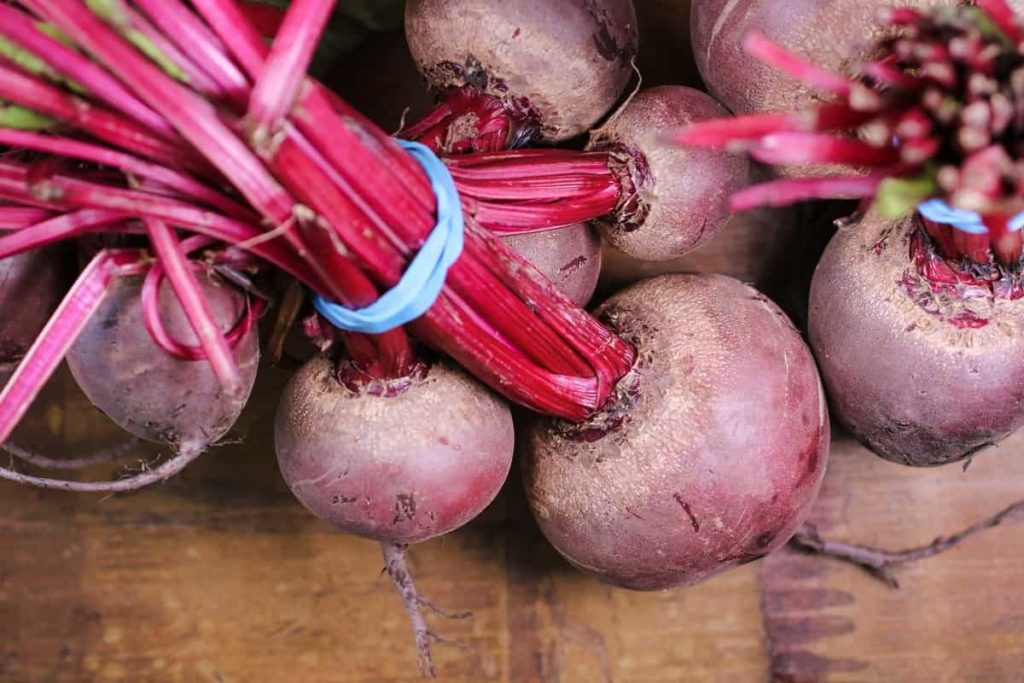
Can you grow Beetroot in pots?
- It is easy to grow Beetroot in pots if you have a small garden. Choose containers 8 inches in diameter and at least 8 inches deep to grow. The container can be as wide or as long as you want, depending on how many Beets you wish to plant. Remember that they need to be sown at a distance of three inches to have enough room to mature.
- You can sow Beetroot seeds directly in a container. Beets can grow well in pots or containers if they have enough depth to grow entirely to maturity. They will grow in and out of the house if they have enough sunlight.
How much space do Beets need to grow?
- Every Beet seed produces 2 to 6 plants. You should put the Beetroot seeds 1 to 2 inches apart in a row. You should lightly cover the seeds with loose soil and sprinkle them with water.
- Since they are cold tolerant, Beetroot usually has no problem starting. You should sow seeds 1/2 inch deep and 1 to 2 inches apart in rows about 12 to 18 inches apart. After sowing Beetroot seeds, cover the seeds with a thin layer of soil.
How many Beet seeds are in a hole?
- After working on your soil, modifying it with compost or green manure, and preparing the ideal bed for your future Beetroot, place one or two seeds together in holes about 1/2 to 1/4 inch deep, and keep each seed at least an inch away from planting.
- You can plant Beetroot seeds directly in the garden. Each Beet seed is a hard little cluster of 2 to 4 seeds. For seed germination, it can take several days or weeks. Therefore, it is essential to keep the soil consistently moist during this period.
Why are my Beets growing so slowly?
- Your Beet plants may not be growing because the soil is very acidic. Beet plants generally prefer a soil pH between 6.5 and 7.5. Soil acidity or alkalinity can affect plant growth. If it is too high on one side of the spectrum, the plant may struggle to absorb nutrients and minerals in the soil.
- If your soil is very compact, just like crowded plants, your Beets won’t be able to spread as you grow. This is why working in some well-rotted manure or compost in the plantation area is essential if you are working with clay or hard soil.
Why are my Beetroot all leaves?
- The Beetroot bulb is a storage mechanism for the plant, so if it doesn’t get enough food, water, or light, it won’t have enough surplus to store. This usually happens because the soil is very poor or the plants are too crowded.
- If your soil is too rich in nitrogen, the plant will put all its energy into the leaves, not the root. So don’t give too much fertilizer and add a little potash in the form of biochar or wood ash. You should add more phosphorus to the soil, such as bone meal, which can affect the growth of larger roots.
Is bone meal good for Beets?
- Beets depend on nutrients in the soil to thrive, one of which is phosphorus. Most soil mixtures don’t already contain enough phosphorus, so you can add bone meal to your soil for several weeks on your plantation. This will help in enriching the soil and best feed the seedlings.
- Adding bone meal to the soil is an excellent way to increase its phosphorus content. If the amount of nitrogen is too high, Beets will produce a lot of green tops but very little in the way of roots.
In case you missed it: Growing Beetroot Hydroponically – A Full Guide

What kind of soil do Beets like?
- Beets grow best in loamy, acid soils (pH levels between 6.0 and 7.5). If your soil is heavy, rocky, hard, or alkaline, mix with an inch or more compost. Add a little bit of wood ash, if accessible, because its rich supply of potassium enhances root growth.
- Beets perform best in sandy soils in spring and heavy soils in autumn because sandy soils warm faster than heavy clay soils. Make the ridges 4 to 6 inches long in areas with poor drainage so water can drain.
- Beets are heavy feeders, and the soil needs to be strengthened regularly with organic matter and some amendments. First, compost or well-rotted manure is added to the soil every year.
- For delicious and soft Beetroot, it is essential to start with good soil. Modify the soil with plenty of compost. It’s worth adding lime if your soil pH is acidic. Beets prefer a soil pH of around 6.5.
- Beets work best in deep, well-drained soil, but never clay, which is too heavy for large roots to grow. The clay soil should be mixed with organic matter to help soften it. Hard soil can cause Beetroot roots to be tough. Sandy soil is excellent.
Does Beetroot grow in winter?
- Although plants have frost-hardy and mature Beetroot stores in the ground during winter, the soil is slightly colder in some areas for strong growth. On the contrary, the summer is somewhat warmer in all areas except the coldest areas. Plants in cold areas sow best in September/October and January/February.
- Winter sowing Beets work; seeds can rest in cool soil and grow well later. If you want to grow Beetroot where temperatures fluctuate, sow in the spring instead. But winter sowing of Beetroot is perfect if you want to grow Beetroot for greens instead.
What happens if you leave Beetroot in the ground?
- If Beetroots are left in the ground during winter, they will soon start producing spring greens. Be sure to harvest your Beetroot before growing these leaves again because if you don’t cut them on time, your Beetroot flesh will turn woody.
- Don’t leave them in the ground for long, though, as they can become hard and woody. Harvest the roots by collecting all the leaf stems in one hand and gently pulling them upwards.
- You can pick them up for 4 to 6 weeks before they become woodier. Plan a fall crop for the sweetest flavor and softest texture plant and harvest the roots after the weather cools down.
In case you missed it: Container Beetroot Gardening Tips, Techniques
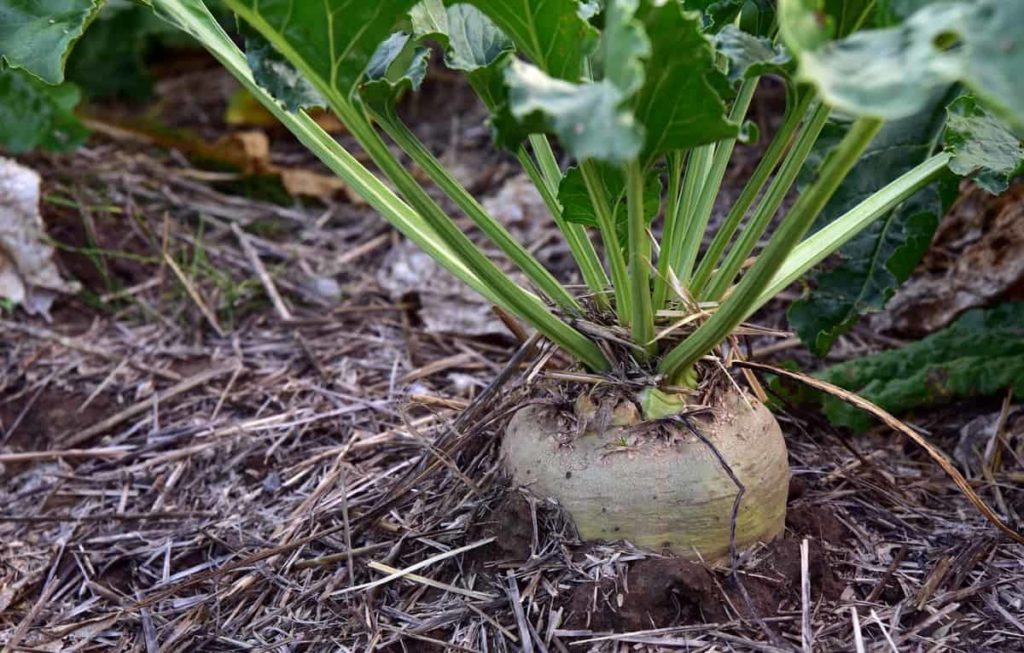
Why do Beetroots bolt?
- The bolting of Beetroot plants results from planting vegetables at the wrong time or hot temperatures during the growing season. Beetroot should be planted two to three weeks after the last frost.
- If the soil is too wet, they can produce leafy canopies with small roots and large leaves, which is not good for anyone. If your Beetroot starts bolting, you need to get out and cut it into the bud and pick the developing flower as soon as possible. This can slow down the bolting process and give the roots time to progress.
What fertilizer do you use for Beetroot?
- Beetroot plant fertilizers should contain macronutrients, especially micronutrients such as potassium and boron.
- Side dress the plants one to three times with 85 grams of the 10-10-10 formula. Higher rates are necessary for areas with high rainfall.
- The best fertilizer for Beetroot should be high in potassium and phosphate and have low nitrogen content. Use 5-15-15 which includes 5% nitrogen, 15% phosphate and 15% potassium or 0-10-10 which includes 0% nitrogen, 10% phosphate and 10% potassium.
- Low phosphorus can result in smaller Beets. To increase phosphorus content, you can add bone meal to the soil is a good way. If the amount of nitrogen is too high, Beets will produce a lot of green tops but very little in the way of roots.
Can you start Beetroot in seed trays?
- Start your Beetroot babies indoors. Beets are known as cold season crops. They like cold temperatures and can be seeded as soon as you can work in the soil. You can start seeds indoors, and February is the month to go.
- Beets can be sown in modular trays to protect them from the head start, weather, and garden pests. Use seed compost with a better texture and nutrients than your standard multipurpose compost. You use a modular seed tray with each section about 2 inches deep.
- You can start Beetroot seeds indoors under grow lights to jump to the growing season, or you can place a container outside. The ideal germination temperature for Beetroot is between 15°C to 30°C, so keep this in mind if planning to start Beet seeds outdoors.
What grows well with Beetroot?
- Members of the cabbage family are the best companion plants for Beets. To enrich the soil and help improve the quality and growth of your Brassica, plant Beetroot near cruciferous vegetables such as Kohlrabi, Kale, Cauliflower, Broccoli, and Brussels Sprouts.
- Garlic is a great choice when companions plant Beetroot, and it has many special features that deserve special mention.
In case you missed it: How to Grow Tomatoes from Seeds: Starting from Scratch, A Beginners Guide to Indoors, Outdoors, and in Pots
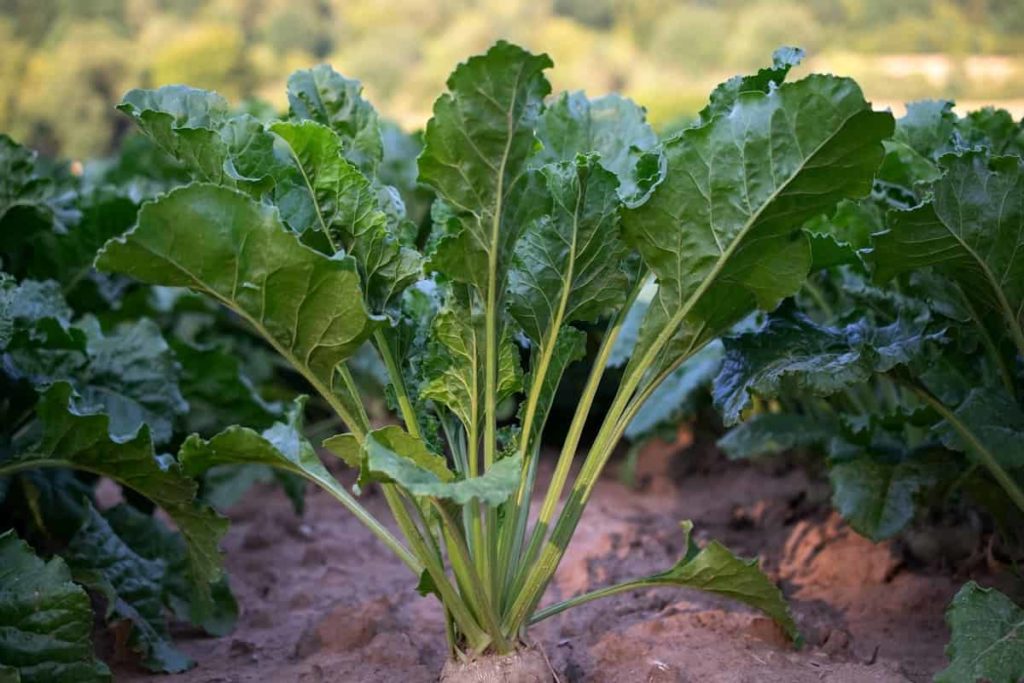
What should not be planted with Beets?
- Although most Beans benefit from Beetroot, Pole Beans are an exception. The Pole Beans and Beets will inhibit each other’s growth, and the extra nitrogen from the Pole Beans will produce Beetroot with a large top and a little Beetroot.
- Field mustard is in the same family as Broccoli and Cauliflower, but Beetroot grown with this particular Brassica has been found to grow poorly.
- Although Chards won’t directly hurt your Beetroot, they are a very similar plant. This way, pests and diseases that attract chard also like eating your Beetroot. Putting these two together can create an ideal habitat for the unwanted.
Conclusion
Beetroot should be an essential part of any vegetable garden. As well as being truly delicious, they’re really easy to grow from seeds, and you don’t have to wait long for harvest time. Beetroot is a hardy root vegetable with high levels of antioxidants and is enjoying growing popularity again as they are easy to grow and taste. You can add young leaves to salads or old leaves that are cooked and eaten like Spinach.
- How to Grow Hibiscus from Flower
- Plantation Ideas for Home Decoration: A Beginners Guide
- Flower Garden Designs and Layouts for Beginners
- Planting and Spacing Techniques in Papaya: A Beginner’s Guide
- Growing Gold: Essential Techniques for Planting Pineapples
- How to Make Kalanchoe Plant Bushy: Home Remedies and Solutions
- 11 Reasons Why Your Gardenia is Not Blooming: Home Remedies and Solutions
- Eco Elegance: The Guide to Designing a Drought-Tolerant Landscape
- Gardening on a Slope: Strategies for Hillside Landscaping
- Nourish and Flourish: Top Organic Mulches for Thriving House Plants
- Everything You Want to Know about Indian Mogra Flower: Discover Uses and Growing
- Green Thumb Success: Expert Tips for Cultivating Greenhouse Pumpkins All Year Round
- Maximize Growth & Flavor: The Ultimate Guide to Companion Planting in Herb Gardens
- How to Control Rhododendron Problems Naturally: Home Remedies and Organic Ways to Fix Them
- Natural Magic: The Remarkable Benefits of Cinnamon for Plants
- Best Steps to Revive Dying Tulip with Natural and Organic Treatment
- 10 Reasons Why Your Angel Trumpet is Not Blooming: Remedies and Treatment
- How to Fix Periwinkle Leaf and Flower-Related Problems: Natural Remedies and Solutions
- How to Fix Zinnias Leaf and Flower Problems: Discover Natural and Home Remedies
- Organic Steps to Induce Lemon Tree Flowers: A Comprehensive Guide
- Bloom Booster: Crafting the Perfect Homemade Bougainvillea Fertilizer
- Optimizing Growth: A Guide to Applying NPK Fertilizer for Potted Plants
- 10 Best Homemade Fertilizers for Rubber Plant: DIY Recipes and Application Method
- How to Boost Female Pumpkin Flowers: Effective Steps for More Flowers and High Yields
- Transform Your Indoor Garden: Top Benefits of Pink Salt for Houseplants
- 10 Best Homemade Fertilizers for Peacock Plants (Calathea): Easy DIY Guide
- Unlock Blooms: 9 Reasons Why Your Potted Chrysanthemum is Not Blooming
- 8 Reasons Why Your Potted Hibiscus is Not Blooming: Fix it with Simple Solutions
- Unlock Blooms: 9 Key Reasons Your Potted Frangipani Won’t Flower
- 10 Reasons Why Is My Ice Plant Not Blooming: Remedies and Treatment
- 10 Reasons Why My Potted Hydrangea Not Blooming: Treatment and Remedies
- 10 Reasons Why is My Wisteria Not Blooming: Remedies and Treatment
- 10 Reasons Why is My Goldfish Plant Not Blooming: Remedies and Treatment
- Maximize Your Space: Ultimate Guide to Balcony Gardening with Grow Bags
- 10 Reasons Why Your Iris is Not Blooming: Remedies and Treatment
- 10 Reasons Why Your Anthurium Plant is Not Blooming: Treatment and Remedies